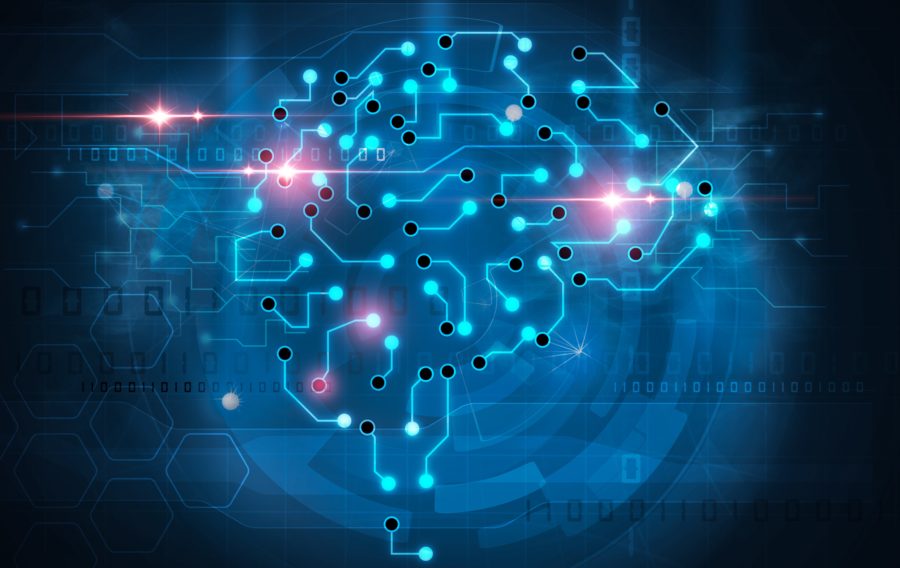
Defence markets are increasingly turning to AI procurement to streamline the process.
Businesses have been investigating the power of AI procurement for the last few years. The use of algorithms, bots, and data can remove the scope for human error and make the process of finding markets and targeting advertising quicker and cheaper. Many businesses will now offer chatbots on websites to solve customer issues and assess what they are looking for. Data from McKinsey showed that 47% of companies used at least one AI feature in their business processes in 2018, up 20% from 2017. Sectors like retail are adopting the technology faster than others, and McKinsey reports that 76% of businesses that have adopted AI have seen significant or moderate benefits. A survey from RELIX also found that AI can increase worker productivity, inform future decisions, and streamline the supply chain. Many businesses are looking to train staff in all areas in data and AI and machine learning (ML) to create better knowledge across their organisation.
Jamie Hinton, CEO of Razor Ltd., said: “Businesses use ML in procurement to help them work with the ever growing procurement options and data to help influence the initial decision making process. It helps identify issues that may arise in the procurement chain, and resolves them, or makes changes before they ever become a problem.”
He added: “There are so many applications for Artificial Intelligence (AI) in everything we do and procurement is no different. We refer to what appears to be intelligent systems as being ‘AI’ however this is a very broad term, primarily used by marketing teams. Almost all things that are referred to as ‘AI’ are in actual fact, Machine Learning (ML), a subset of the AI category.”
Machine learning involves stricter algorithms that change as they are exposed to new data, whereas AI is capable of reasoning and adapting without human input. Another subset of AI, deep learning, involves multilayered neural networks learning from a large amount of information. Jamie also described how humans and AI can work together, saying: “Computers are incredible tools, and can conduct repetitive computational tasks faster than any human can, but they still aren’t perfect. Take the weather, for example. We have plenty of historical data and some very powerful computers processing the inputs all the time. The computer alone still isn’t perfect and nor is the human being who is inputting the data. Together however, they are better and historically have improved exponentially. It is important to note, however, that there is a lot more to prediction than inputting data and creating a model that analyses it, no matter how complex the model is.”
“It is this combination where we see ML and procurement combining to enhance the process. AI can be used to categorise spend for example and is especially good at reviewing this over long periods of time. It can identify trends and capture unexpected activity.”
“It is also great at identifying supplier risk. Using internal and external data sources, algorithms can be used to highlight potential risk in suppliers further down the supply chain.”
“It is important to highlight that these approaches aren’t replacing people, they are making them more efficient and in some cases superhuman!”
The US DOD is training its procurement teams to use non-traditional technology to catch up with the private sector. At the Pentagon, defence acquisition has been downsized from 17 to eight offices in an attempt to reduce red tape. The Defence Policy bill for the 2019 fiscal year emphasised changes designed to encourage faster innovation, prototyping, and acquisition. The US is looking to private companies to improve their technology. Small satellite companies, for example, can provide signals intelligence gathered from space for commercial purposes. Countries like China and Russia are also developing AI, making it a priority for the US DOD. The US AI strategy, released in February 2019, emphasised the need for an enterprise Cloud foundation. It is hoped this will improve efficiency and responsibility. The strategy also detailed how the US will ensure their workforce is ready for AI, in procurement and on the battlefield. This includes training existing personnel and hiring new recruits with knowledge of artificial intelligence. The DOD will create a common foundation of data to allow for a decentralised use of AI. This will include data, tools, cloud, and edge services. Automation is also a big part of the strategy to speed up production.
The European Defence Agency (EDA) has begun a number of initiatives to incorporate AI into its supply chain processes. They recently launched a competition to allow organisations to explore how AI can be applied in defence, including improving “intelligence gathering and processing of information to improve the common operational picture”. Because AI can respond to changes on its own, it can seek out more efficient ways of ordering systems and finding opportunities within the supply chain. Machine learning can process large amounts of data with algorithms to achieve a predetermined objective it can make it easier to gather intelligence and organise data. Recently, the UK met with Bahrain to discuss AI in the public sector and the guidelines set out by the World Economic Forum. The WEF lists Governance, Design, Monitoring, and Reskilling as key ways of developing responsible AI practices. Both countries will produce a pilot scheme based on the guidelines. The UK Department for Digital, Culture, Media, and Sport is the first country to partner with the WEF at the Centre of the Fourth Industrial Revolution on the projects, which will involve sending a government representative to the centre in San Fransisco. Currently, the UK government’s main priority with AI is how it can be used in other areas of the public sector.
As technology like Big Data and IoT is adopted by defence markets there will be more of an opportunity created for AI. Currently, the biggest AI defence market is the USA, with the DOD, Intelligence Agencies, and the Department of Veteran’s Affairs leading the adoption of AI. AI procurement can work alongside human staff to run supply chains, rather than taking over their roles. It can also be useful in procurement security, able to detect fraud and conduct intelligent invoicing. AI can rank vendors and assess their contribution to the supply chain, making it easier to create an efficient base of suppliers. Kay Firth-Butterfield, the head of AI at the World Economic Forum, said: “In government, there are back-office gains to be had to free up civil servants to do more.”
“Governments want their citizens to be at forefront of developing and using this tech, and benefiting from the economic gains. Governments’ significant buying power can drive private sector adoption of these standards, even for products that are sold beyond government.”
More governments have expressed an interest in taking on AI. As it is being adopted, solid information on the benefits is becoming available over speculation. Governments are mostly looking to AI in sectors besides defence, but it could be a benefit to defence markets.
If you would like to join our community and read more articles like this then please click here.
ai artificial intelligence Bahrain Economy EDA Machine Learning procurement supply chain UK US DoD








